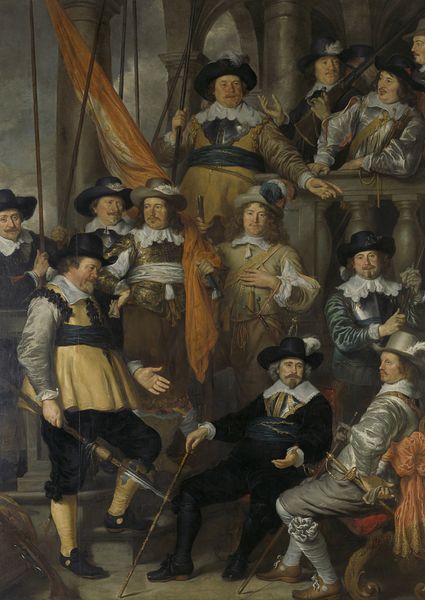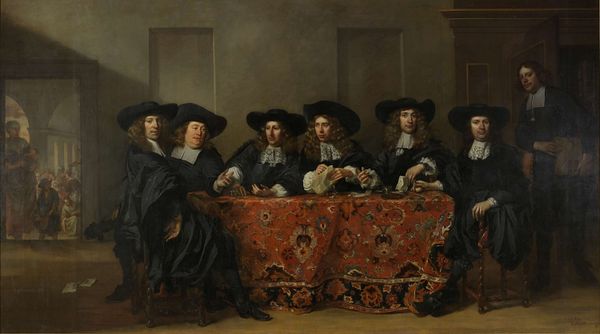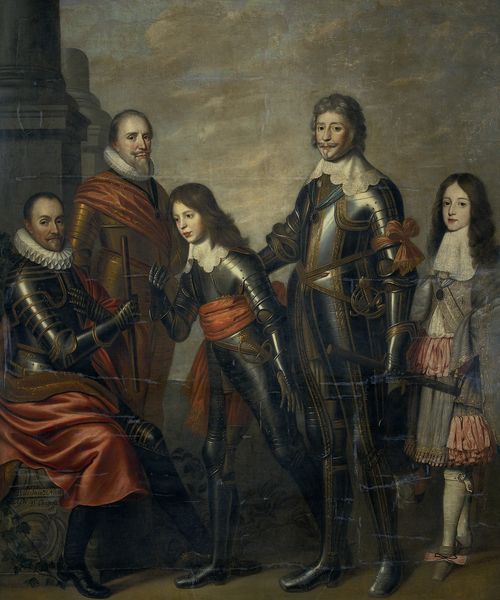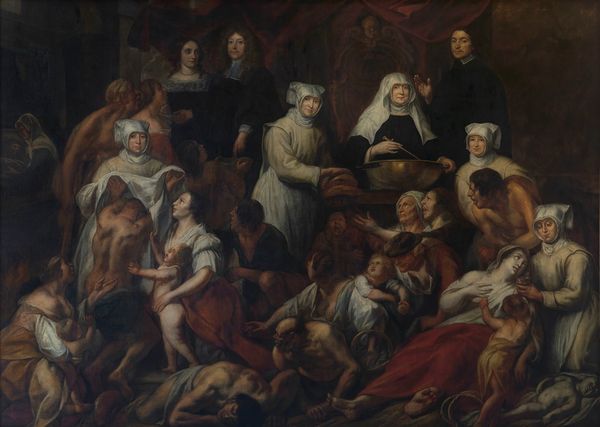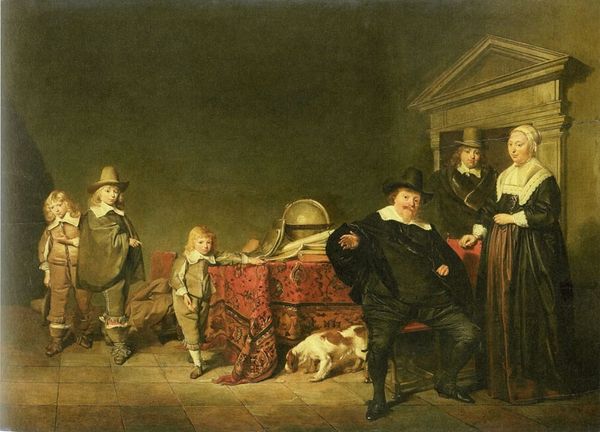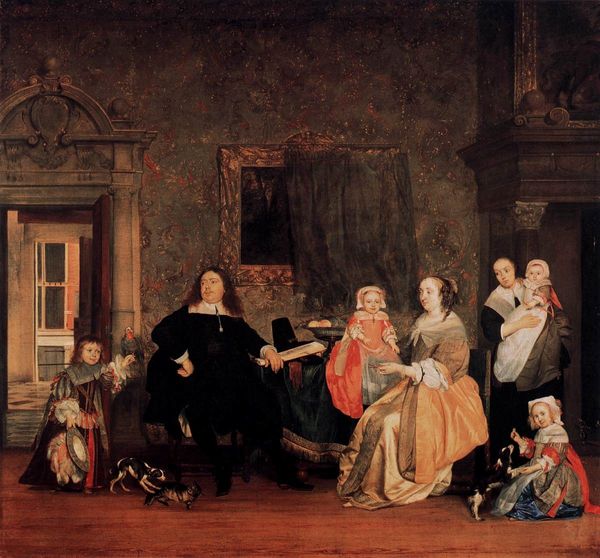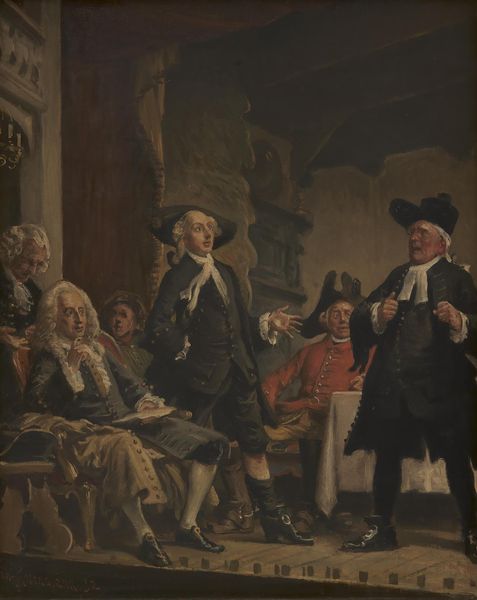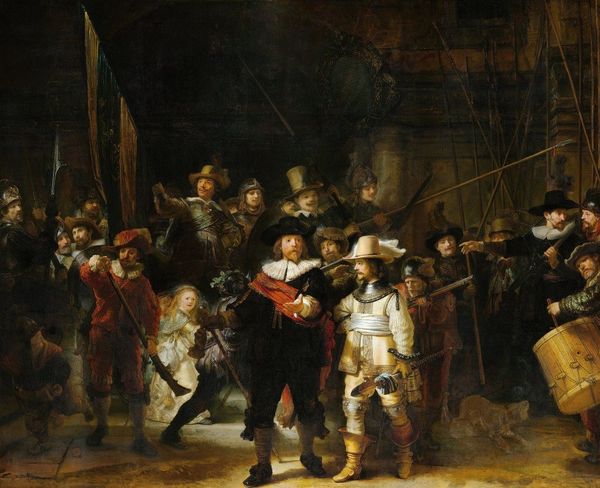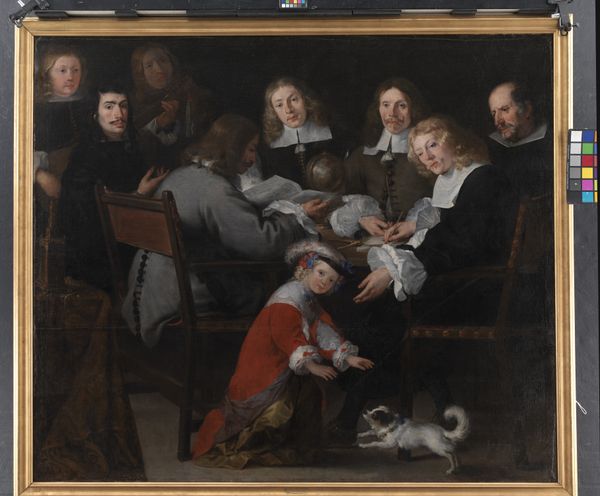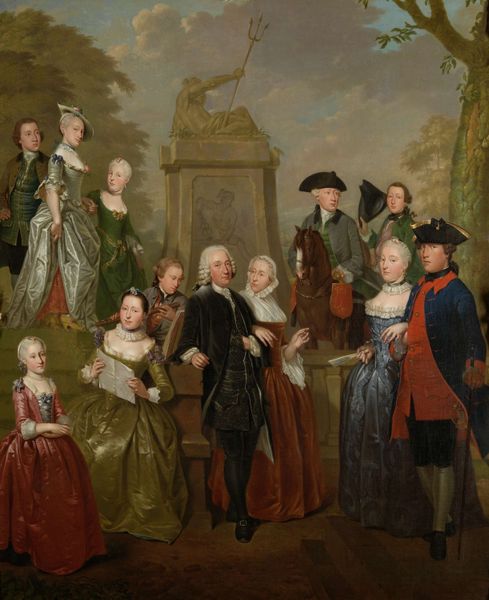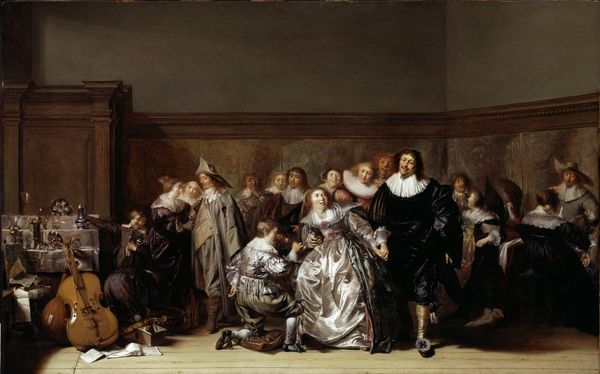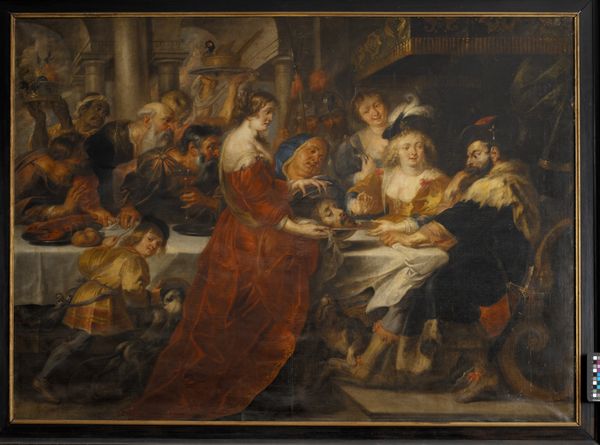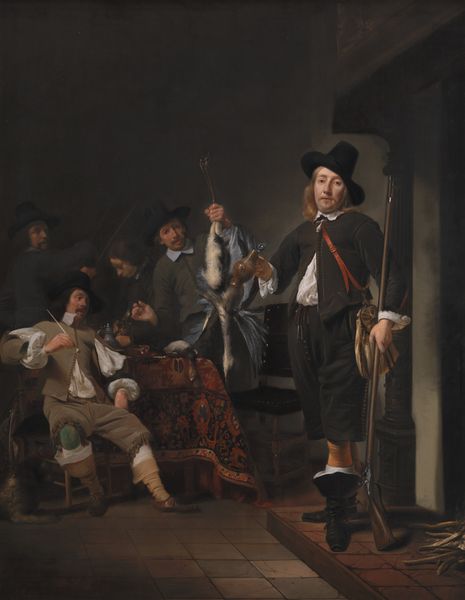
painting, oil-paint
#
portrait
#
baroque
#
dutch-golden-age
#
festivity
#
painting
#
oil-paint
#
group-portraits
#
genre-painting
#
academic-art
#
realism
Copyright: Public domain
Curator: Here we have Ferdinand Bol's "Schuttersstuk, Schutterij Onder Leiding Van Kolonel Govert Suys" from 1653, a fine example of a Dutch civic guard portrait. Editor: My eye is drawn to the sumptuous textures – the crisp linen, the sheen of the officers' sashes. And that dog in the lower right, sleeping peacefully amidst all this finery! It provides a very needed element of humanity to what could have felt stuffy. Curator: Precisely! These schutterstukken, or civic guard portraits, were essential for projecting power and social status within Dutch society. The guardsmen, acting as local militia and peacekeepers, commissioned such pieces to showcase their importance. Bol was trained in Rembrandt's studio; this artwork reveals the material investment of the emerging Dutch middle class to preserve their status. Editor: I find it interesting how these group portraits reflect a shift in artistic patronage. Away from the church and monarchy and toward these…burghers. And how this is recorded in how artists selected the medium of oil paint as a sign of professionalizing art to represent civic guard, the new wealthy class who wanted to ensure that future generations would view them positively. Curator: Exactly! Bol had a prolific career crafting flattering images for Amsterdam's elite. The painting, like so many group portraits of its time, immortalized a very specific form of civic structure. Editor: The scale is rather imposing, no? Imagine what labor went into preparing the canvas, mixing the pigments... it is this kind of production that made paintings such luxury goods. I like the rather unkempt detail of a hunting dog lounging beneath the central table: a nod to practicality, to everyday life and even leisure seeping into official iconography. Curator: Note the composition though; these paintings, despite the illusion of camaraderie, always have a clear hierarchy at play. The commander always occupies the center, asserting the political structure. These civic guard paintings reflect how this relatively young nation constructed and performed civic identities, so of course you would get the wealthy and power displayed throughout. Editor: And that labor, both in material production and posing… it all translates into a statement about value, about what this new mercantile elite held dear. Curator: Indeed. By studying artworks like this, we gain insights into the artistic strategies these power brokers employed in building up cultural institutions to support their new social orders. Editor: A striking look into the materiality of status!
Comments
No comments
Be the first to comment and join the conversation on the ultimate creative platform.
